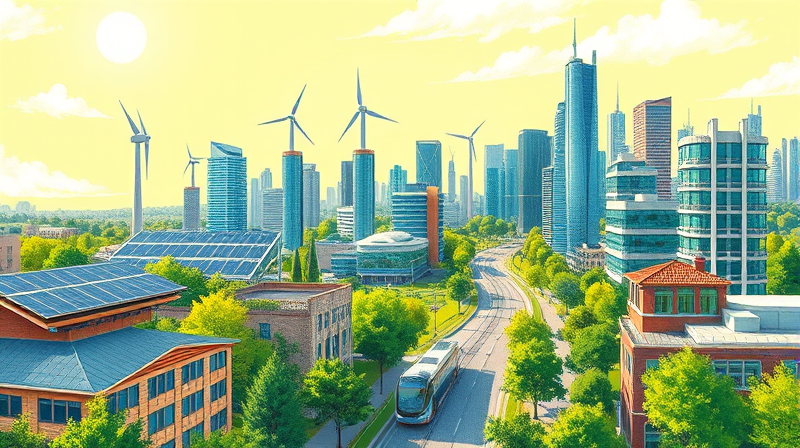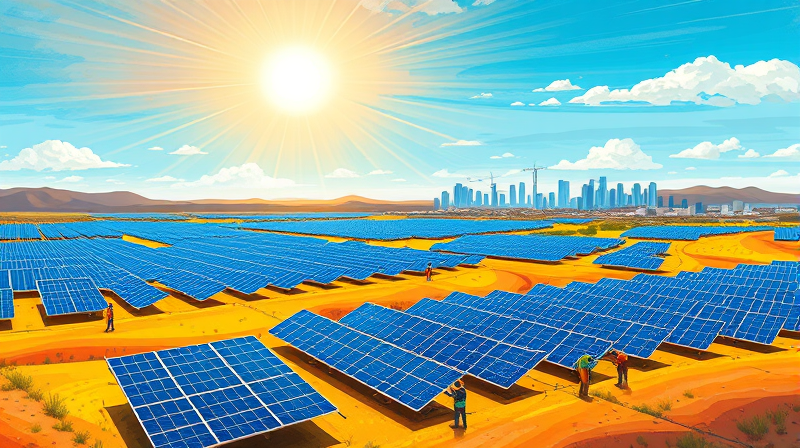
In an era marked by climate urgency and technological innovation, green infrastructure has emerged as a transformative frontier for investors. The confluence of policy momentum, consumer demand, and corporate commitments is driving an unprecedented boom in sustainable construction, renewable energy integration, and smart city solutions. For investors seeking both impact and returns, this structural megatrend offers a diverse array of opportunities that align financial performance with environmental progress.
The global green construction market is projected to expand from US$ 375.80 billion in 2025 to US$ 780.72 billion by 2032, reflecting a robust compound annual growth rate. Meanwhile, the green building market will grow from $646.81 billion in 2025 to $933.67 billion by 2029. These forecasts signal an era where construction, energy, water management, and digital systems converge to create more efficient and resilient built environments.
This revolution represents a paradigm shift: projects that were once niche or costly now benefit from economies of scale, regulatory support, and consumer preference. As governments tighten carbon regulations and offer incentives, developers and operators are racing to integrate green materials, renewable energy sources, and advanced monitoring technologies into every stage of the lifecycle.
Historically, green projects were perceived as expensive or marginal. Today, innovation in materials and processes has reduced upfront costs while delivering enhanced energy efficiency and occupant health. Advanced solar technologies, high-performance insulation, and modular construction techniques allow developers to meet stringent environmental standards without sacrificing profitability. On the horizon, emerging solutions—such as carbon-sequestering concrete and bio-based composites—promise to further transform the built environment.
Regional dynamics also influence growth patterns. North America leads in materials adoption, while Asia Pacific is the fastest-growing market, driven by urbanization and government initiatives. Meanwhile, Europe continues to pioneer carbon-neutral building codes, setting benchmarks that resonate globally. For investors, understanding these geographic trends is essential to identifying high-potential opportunities.
Policy measures such as tax credits, rebates, and zoning benefits have created an encouraging backdrop. In many jurisdictions, developers can secure premium rents or faster approvals for green-certified projects. This regulatory tailwind is complemented by financial instruments—like green bonds and sustainability-linked loans—that explicitly reward environmental performance.
Several powerful forces are propelling the green infrastructure sector forward:
Energy cost inflation has made long-term operational savings and resilience a priority for property owners, while younger demographics increasingly demand homes and offices that align with their environmental values. On the financial side, the proliferation of green bonds and ESG funds is lowering the cost of capital for sustainable projects.
Furthermore, corporate supply chains are embracing green infrastructure. Data centers powered by renewable energy, eco-friendly distribution hubs, and low-emission logistics networks underline the breadth of applications. Companies increasingly view sustainable assets not only as corporate responsibility milestones but also as competitive advantages in attracting employees and customers.
The expansion of green infrastructure spans multiple investment angles, each offering distinct risk-return profiles:
To illustrate the scale of these markets, consider the headline figures:
Despite the immense momentum, investors must be mindful of key obstacles. The annual gap to achieve global Sustainable Development Goals exceeds USD 2.5 trillion, highlighting the scale of funding required. Public budgets are overstretched, making public-private partnerships and financing solutions essential to bridge this divide.
Regulatory frameworks vary widely by region, affecting project timelines and returns. Staying abreast of evolving codes, incentive programs, and carbon pricing mechanisms is crucial. Mitigating construction delays and cost overruns in complex green projects requires robust risk management and local expertise.
Volatility in raw material prices and supply chain disruptions can pose risks to project budgets. Investors may mitigate these challenges by diversifying across markets and securing long-term supply agreements. Insurance and hedging strategies offer additional safeguards against cost overruns and regulatory changes.
To participate effectively in the green infrastructure boom, investors can follow these actionable guidelines:
Building internal capabilities is equally important. Organizations should invest in expertise on green technology assessment, impact measurement, and regulatory compliance. Engaging specialized advisors and collaborating with academic institutions can enhance due diligence and uncover novel investment prospects.
By establishing a disciplined investment process and collaborating with sector specialists, investors can balance risk and return while contributing to global decarbonization efforts. Ongoing monitoring and adaptation ensure portfolios remain aligned with technological advancements and regulatory changes.
The rise of green infrastructure represents one of the most compelling investment themes of our time. It merges financial performance with environmental stewardship, offering pathways to durable returns and measurable impact. As the world accelerates its transition to a low-carbon future, investors who engage strategically and proactively will be rewarded both economically and ethically. Now is the moment to harness the power of sustainable infrastructure and build portfolios that drive progress for people and the planet.
References













